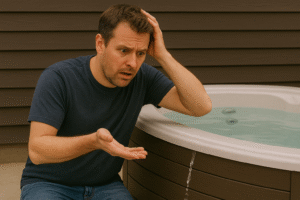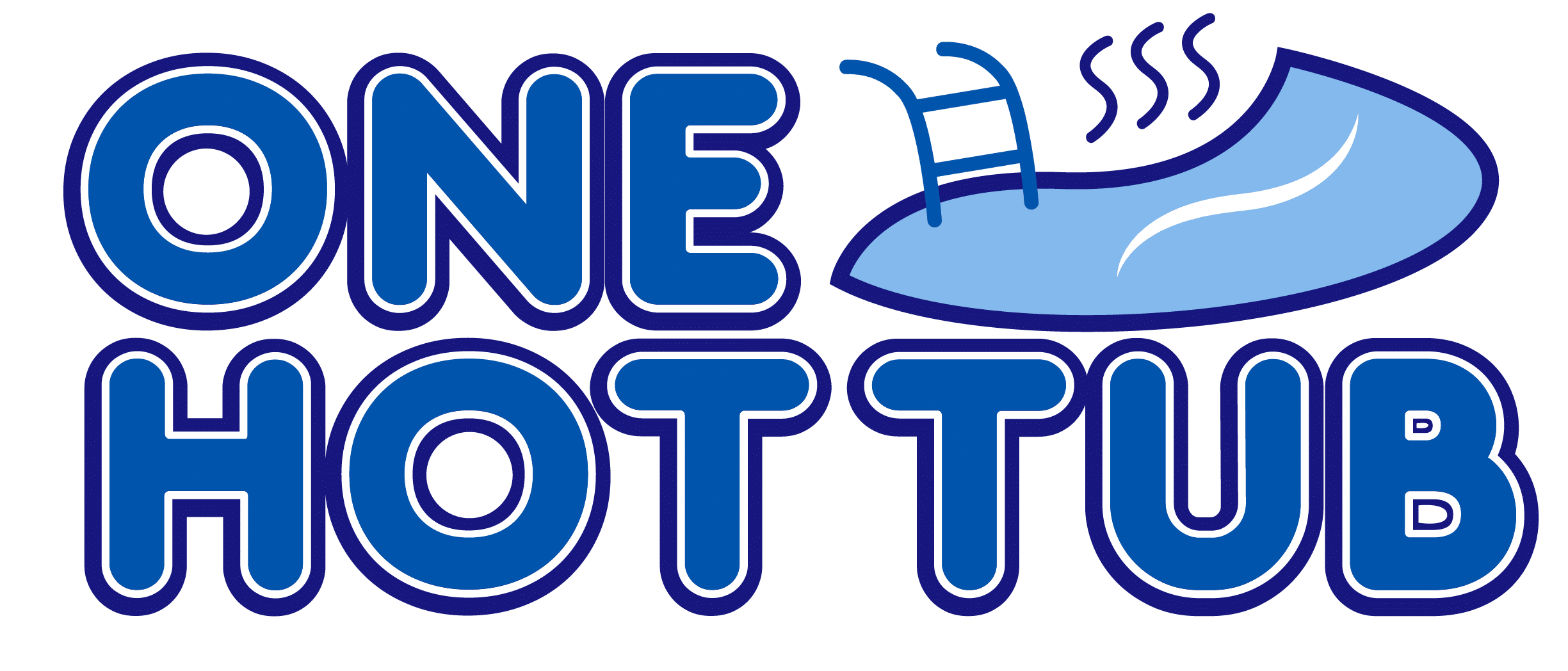Table of Contents - How to Find a Leak in a Hot Tub: A Comprehensive Guide
- How to Find a Leak in a Hot Tub: A Step-by-Step Guide
- Common Signs of Hot Tub Leaks
- Essential Tools for Leak Detection
- Step-by-Step Leak Detection Guide
- Common Leak Locations and Fixes
- Final Thoughts – Hot Tub Leak Detection
- FAQs
- How do I know if my hot tub has a leak?
- Is water loss always a sign of a leak?
- What are the most common hot tub leak locations?
- How can I find the source of a hot tub leak?
- What is the dye test method for leaks?
- Can a leak only happen when the jets are running?
- What tools do I need for leak detection?
- What is the pressure testing method?
- What should I do if I find a leak in a pump or union?
- Is it safe to use sealants like Marlig Fix-A-Leak?
- When should I call a professional?
- How can I prevent future leaks?
- What happens if I ignore a small leak?
- How often should I inspect for leaks?
This blog post may contain affiliate links. As an Amazon Associate I earn from qualifying purchases.
How to Find a Leak in a Hot Tub: A Comprehensive Guide

How to Find a Leak in a Hot Tub: A Step-by-Step Guide
Ready to play detective with your hot tub? Those sneaky leaks can pop up in five different spots – from pumps and heaters to PVC connections, valves, and jets. Trust us, we know that sinking feeling when you spot your hot tub leaks dropping water levels, especially when the culprit stays hidden!
Maybe you’ve noticed your hot tub losing water mysteriously, or perhaps you’ve spotted suspicious puddles around the base. Don’t worry – you’re part of a club no hot tub owner wants to join, but one that’s totally fixable! While those unexplained water drops might seem worrying, finding the source doesn’t require a master’s degree in plumbing. A few smart tricks (like our favorite dye testing method) can help you crack the case.
Let’s turn you into a leak-finding pro! We’ll guide you through our battle-tested steps to spot and pinpoint those pesky leaks. From simple visual checks to clever testing techniques, we’ve packed this guide with practical fixes that actually work. Whether your tub is dealing with tiny drips or bigger issues, we’ll help you get back to enjoying those relaxing soaks in no time.
Common Signs of Hot Tub Leaks
Wouldn’t it be great to catch those sneaky hot tub leaks before they drain your wallet? Let’s dive into the telltale signs your spa might be secretly losing water!
Unexplained Water Level Drops
Picture this: you’re ready for a relaxing soak, but your water level seems lower than yesterday. While some evaporation is perfectly normal, losing more than an inch of water weekly spells trouble. Here’s the kicker – if your water keeps disappearing even when your tub sits unused, you’re likely dealing with a leak rather than natural evaporation.
Want a foolproof way to check? Try this spa owner’s trick: grab a marker, make a small line at the water level, and check back tomorrow morning. Keep in mind that some sneaky leaks only show up when you’re using certain features, like your pumps or that fancy waterfall.
Wet Spots and Puddles
Found mysterious puddles around your spa? Don’t brush them off! Start playing detective by checking the area before and after you use your tub. Sometimes the real story lies behind those side panels – pop them off, and you might discover a mini swimming pool or soaked insulation foam hiding inside.
Sure, a little water near the base might just be rain or condensation, but let’s be thorough! Keep your eyes peeled for these trouble spots:
Suspicious moisture under the cabinet
Telltale drips above pooling areas
Sneaky water trails
Soggy insulation foam
Higher Than Usual Water Bills
Has your water bill suddenly jumped? Let’s crunch some numbers! The average family uses 160-200 gallons daily, so unexpected spikes deserve your attention. Check out these eye-opening facts:
Pesky leaks can waste 180 gallons every week
Left unchecked? That’s up to 9,500 gallons yearly down the drain
A happy, healthy hot tub only needs fresh water every 3-4 months
Here’s some perspective for your wallet: while a well-behaved hot tub adds just $10-23 to monthly water costs, anything higher might signal trouble. Plus, some leaks turn into real water wasters when those pumps kick into high gear.
Your Leak Detection Cheat Sheet
Remember, catching leaks early saves headaches later! Make it a habit to peek inside your equipment cabinet during water changes. While you’re there, give those unions a quick check – they should be snug and dry. And don’t forget to look for water spots or rust hanging out on your motor.
Essential Tools for Leak Detection
Ready to become a leak-hunting expert? Let’s stock your detective toolkit with everything you’ll need to track down those sneaky water escapes!
Leak Detection Dyes
Think of these dyes as your underwater spy team! They’ll sneak into the tiniest cracks and show you exactly where that water’s making its getaway. Here’s your color-coded lineup:
Red dyes – Your trusty sidekick for regular hot tubs
Yellow dyes – The dark surface specialist
Blue dyes – Your bright surface buddy
Want to take your leak hunting to the next level? Try those fancy UV dyes that light up like a disco under ultraviolet light! These clever formulas are heavier than water, so they’ll chase those leaks right to their source.
Pressure Testing Equipment
Time to bring out the professional gear! Here’s what your pressure testing arsenal needs:
Must-Have Tools:
Testing manifold (your command center)
Pressure bungs (from tiny 12mm to hefty 50mm)
20psi supply pressure regulator
Threaded bungs
Pro tip: Those Anderson Manufacturing pressure testing plugs are worth every penny. They’re like the Navy SEALs of leak testing – tough and reliable when the pressure’s on!
Basic Repair Supplies
Found your leak? Here’s your fix-it toolkit:
Adhesives and Sealants:
Specialized Tools:
Your Tool Success Guide:
Remember, great tools are like good friends – treat them right, and they’ll never let you down! Quality equipment might cost a bit more upfront, but it’ll save you loads of headaches (and cash) down the road. Just keep everything clean, organized, and ready for action!
Step-by-Step Leak Detection Guide
Let’s crack the case of your mysterious hot tub leak! These proven detective methods will help you track down even the sneakiest water escape routes.
1. Visual Inspection
Safety first! Cut the power before you start your investigation . Now, let’s get those side panels off and grab your trusty flashlight. Time to check these usual suspects:
Pump connections and their sneaky seals
Every plumbing fitting (they love to drip!)
Those pressure switches hiding in corners
All internal parts for suspicious moisture
Keep your eyes peeled for puddles beneath the shell. Those pumps running at high pressure are often the first to crack under pressure!
2. Dye Testing Method
Ready to play with colors? Dye testing is like giving your leak nowhere to hide! Here’s your game plan:
Power down everything
Top up your tub to its happy place
Drop that dye near suspicious spots
Watch where those colors flow
Pro Tip: Those jets, seals, and fittings? They’re the troublemakers – give them extra attention!
3. Pressure Testing Process
Time to get scientific! Your pressure testing mission includes:
Lock down that system
Set up your manifold command center
Pump it up to 30-32 PSI
Play the waiting game
Heads Up: Your system should hold steady like a rock. If it drops more than 2 PSI in 24 hours, you’ve caught your culprit!
4. Shell Inspection Techniques
Your hot tub shell might be hiding secrets. Let’s uncover them:
Hunt for visible battle scars
Check those corners and lights
Spot any moisture sneaking inside
Give those jet seals the third degree
Your Leak-Finding Arsenal:
Remember, some leaks are shy – they only show up when your tub is running or resting. Stay patient and methodical, and you’ll catch that leak red-handed!
Common Leak Locations and Fixes
Your hot tub’s sneaky leaks have favorite hiding spots! Let’s map out these trouble zones and learn how to outsmart them.
Pump and Motor Issues
Your circulation pump loves playing hide and seek with water – no surprise since it’s spinning at a whopping 3450 rpm! Here’s where trouble usually bubbles up:
Shaft Seal Failures
That dry-running pump? Big mistake
Watch for sneaky drips under the volute
Fix this fast – your motor’s life depends on it
Union Connection Problems
These water highways need perfect seals
Those O-rings age like cheese – not well
Easy does it with the wrench – crack that union, and you’re shopping for parts
Heater Component Leaks
Your heater’s daily hot-and-cold workout makes it vulnerable. Keep an eye out for:
Pressure switch tantrums
Heating element terminals acting up
Those gaskets giving up the ghost
Red Alert Signals:
Uninvited water in your control box
Damp heater terminals spelling trouble
Those hefty heater jam nuts crying tears
Valve and Fitting Problems
Think of valves and fittings as your tub’s joints – they need regular check-ups. Watch for:
Seals showing their age
Valve bodies with battle scars
Connections playing loose
| Problem Area | Your Fix |
|---|---|
Union Leaks | Fresh O-ring or gentle tightening |
Shaft Seal | Pop in a new seal kit ($20-30) |
Valve Issues | Full valve replacement time |
Keep Your Tub Happy:
Mind those pH levels – keep them between 7.2-7.6 for happy seals
Peek inside during water changes
Small leak today = big headache tomorrow
Here’s the thing about ignored leaks – they’re like uninvited house guests who bring their friends. That tiny seal leak? It’s plotting to flood your motor bearings and windings. Suddenly, your quick seal swap turns into a full pump replacement drama!
Professional Testing Tools
Looking for serious testing muscle? LaMotte and Taylor Technologies professional-grade testing equipment leads the pack. These aren’t your average testing kits – they’re the real deal.
Pro Tools That Deliver:
LT-1000 Amplifier System
Listens for leaks like a stethoscope
Catches sounds you can’t hear
Spots even hairline cracks
Taylor Test Kits
Checks multiple water parameters
Lab-grade accuracy
Full-spectrum analysis
DIY Repair Solutions
Love fixing things yourself? These trusted solutions have your back:
Marlig Fix-A-Leak
Tackles holes up to 3mm
Friends with all spa materials
Gets the job done in 48 hours
Quick Fix Guide:
Warm that bottle (15 mins in warm water)
Out with the filters
Pour into filter intake
Let it run 4-6 hours
Mix up those jet speeds
Final Thoughts – Hot Tub Leak Detection
Those sneaky hot tub leaks don’t stand a chance against your new detective skills! What seemed like a mountain of trouble at first becomes a manageable challenge once you’ve got your toolkit ready. From simple visual checks to those clever dye tests and pressure readings, you’re now equipped to catch those water-wasting culprits in action.
Remember how we talked about those mysterious puddles and unexplained water losses? They’re your hot tub’s way of waving a red flag. Quick action on small drips saves you from those wallet-draining repairs later. Sure, some fixes are perfect for DIY weekend warriors, but don’t hesitate to call in the pros when things look serious. After all, your hot tub should be your relaxation partner for years to come!
Keep those maintenance checks simple and regular – a quick peek here, a careful inspection there. Stock up on those basic repair supplies (they’re like a first-aid kit for your spa), and you’ll be ready when minor issues pop up. Yes, hunting down leaks takes some patience, but nothing beats that victory moment when you solve the puzzle yourself. Now go give your hot tub some attention – it’s time to turn those drips into dips!
FAQs
How do I know if my hot tub has a leak?
Watch for these signs:
Water level drops more than 1 inch per week
Unexplained puddles around the base
Wet insulation behind panels
Rising water bills
Is water loss always a sign of a leak?
Not always. Normal evaporation can cause minor drops (up to 1 inch weekly), but continued loss when the tub isn’t in use is a strong indicator of a leak.
What are the most common hot tub leak locations?
Pump shaft seals
Heater unions and gaskets
Jet fittings and seals
PVC pipe connections
Valves and diverters
How can I find the source of a hot tub leak?
Follow these steps:
Turn off power to the tub
Inspect visually inside the cabinet
Use dye testing near jets and fittings
Perform a pressure test for plumbing leaks
Check the shell for cracks or jet seal failure
What is the dye test method for leaks?
Add a few drops of colored leak detection dye near suspicious areas with the tub off. Watch the dye’s path—it will be drawn into the leak.
Can a leak only happen when the jets are running?
Yes. Some leaks only occur under high pressure or when certain pumps are active. Check the tub during and after operation.
What tools do I need for leak detection?
Leak detection dye (red, yellow, or blue)
Flashlight and inspection mirror
Pressure testing plugs and manifold
Wrenches, sealant, and replacement O-rings
What is the pressure testing method?
Seal off the system, pressurize the lines to 30–32 PSI, and monitor for pressure drops. A loss of more than 2 PSI in 24 hours indicates a leak.
What should I do if I find a leak in a pump or union?
Union leaks: Replace the O-ring or hand-tighten
Pump shaft leaks: Replace the shaft seal
Gasket leaks: Replace the worn gasket
Is it safe to use sealants like Marlig Fix-A-Leak?
Yes, for small leaks (up to 3mm). Pour into the filter intake, circulate for 4–6 hours, and allow the sealant to settle. Follow all label instructions.
When should I call a professional?
Call a pro if:
You can’t locate the leak
The leak is in internal plumbing
You see water in the control box or electrical components
Pressure testing reveals ongoing issues
How can I prevent future leaks?
Maintain balanced pH (7.2–7.6)
Check connections during water changes
Replace aging seals and gaskets
Perform regular visual inspections
What happens if I ignore a small leak?
Small leaks can lead to:
Rusty motors
Water-damaged electronics
Soaked insulation
Full pump failure and costly repairs
How often should I inspect for leaks?
Inspect your hot tub during every water change or at least once per quarter, especially if your tub is used frequently.



